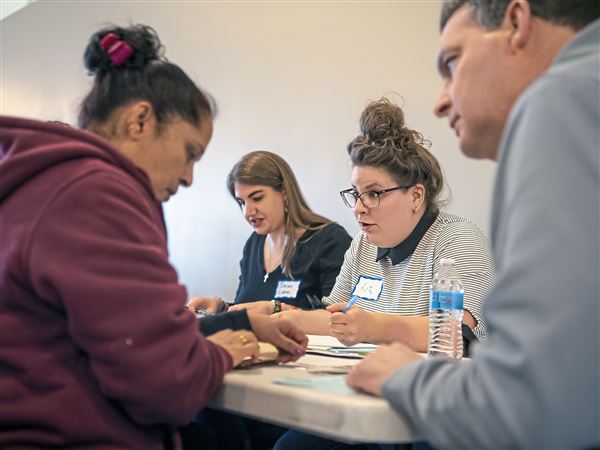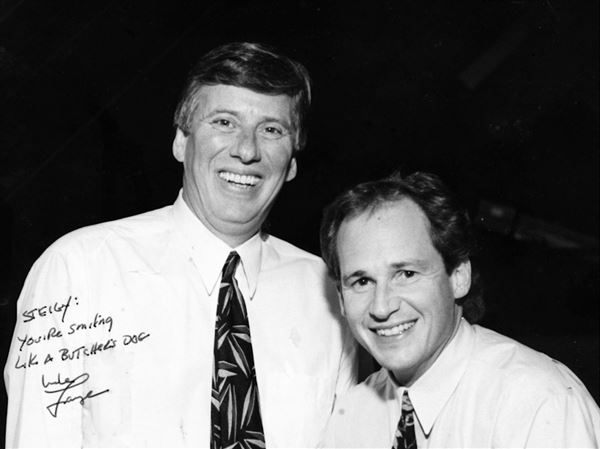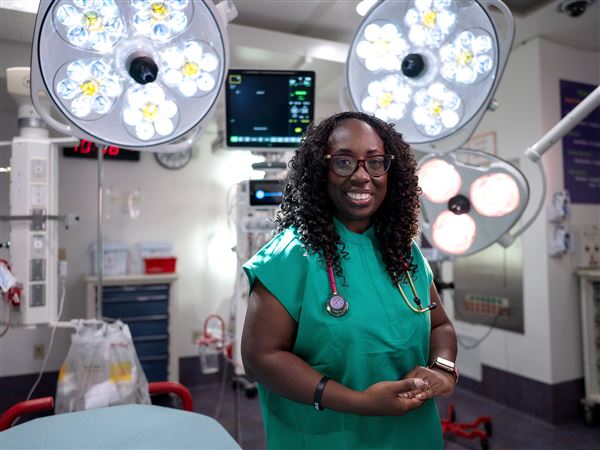Roger W. Hendrix loved words, music and science. He was a microbiologist — studying bacteriophages, viruses that attack bacteria — a clarinet and recorder player, and a lover of wordplay.
Sometimes he was able to bring those passions together. He held Christmas concerts in the University of Pittsburgh biology department and called the band the BSO, or Biological Sciences Orchestra, a play on the Boston Symphony Orchestra, said his brother Barton Hendrix.
"All the world's a phage," reads the subtitle of one of his more than 100 published papers ("Evolutionary relationships among diverse bacteriophages and prophages:" precedes the subtitle pun).
And those loves fed into each other. “That he was such an excellent musician had something to do with how easily he was able to see patterns" in his work, said Robert Duda, a research assistant professor who worked in Mr. Hendrix's lab for 29 years.
He also was, said loved ones, a wonderful man. "I can only remember one occasion when he ever said anything rude or negative about anyone, even in private to me," said his wife of 46 years, Susan Godfrey.
Mr. Hendrix died Aug. 15 in Pittsburgh following a stroke earlier in the month. He was 74.
Mr. Hendrix grew up in Walnut Creek, Calif., and spent his childhood going backpacking in the Sierra Mountains with his family. He was already an avid scholar and musician in high school, part of the award-winning jazz band at Pleasant Hill High School, according to his brother.
He studied biology at the California Institute of Technology then completed his doctorate at Harvard University. His Ph.D. adviser was James Watson, co-discoverer of the structure of DNA.
It was due to Mr. Watson that he met Ms. Godfrey: Mr. Watson was director of the Cold Springs Harbor Laboratory of Molecular Biology, while Ms. Godfrey's microbiology Ph.D. adviser, University of Pennsylvania's Sol Goodgal, was teaching bacterial genetics there. They met while they were working in their respective advisers' Cold Springs Harbor labs.
While most men were turned off by her math background in that era, said Ms. Godfrey, Mr. Hendrix responded by peppering her with math and biology jokes. "What do you get when you cross a grape and an elephant?" Ms. Godfrey recalled him asking. “Grape-elephant-sin(theta),” she answered, playing on the mathematical "cross product" of two vectors.
Many of Mr. Hendrix's loves he shared with Ms. Godfrey. One of the first times she met his family, she said, was a backpacking trip in the Sierras. Later, some Harvard friends of his trained them in ice climbing and took them to the Andes. Their altitude record was 18,600 feet, at the top of an unnamed peak in Peru.
They also played music together, including Baroque and Renaissance music. Mr. Hendrix owned multiple period instruments, such as the krumhorn, a curved, double-reeded woodwind, and the shawm, a predecessor to the oboe. They were amateurs, said Ms. Godfrey, but they played at the Mattress Factory and the Carnegie Library.
Mr. Hendrix joined the University of Pittsburgh biology faculty in 1973 and never left. He was planning to retire when it got boring, but it never did. "He was absolutely in love with teaching science," said his brother, a high school physics teacher.
Among Mr. Hendrix's Ph.D. students was Lap-Chee Tsui, the Canadian discoverer of the gene that causes cystic fibrosis.
"Roger was a true gentleman with profound wisdom and mild manners. He never got mad at the slow progress of my research but provided all sorts of ideas and support whenever I made any breakthroughs, no matter how small the observations were," Mr. Tsui said in an email.
He also loved doing science, said his colleague Mr. Duda. "When the revolution of DNA sequencing happened," Mr. Duda said, "I showed him the tools to search the [gene] database, and he didn't come up for air for two days."
Mr. Hendrix set the standard in the study of the evolution of bacterial viruses, said Mr. Duda.
Mr. Duda co-authored a paper with Mr. Hendrix on the genetics of a bacteriophage called Lambda PaPa. Mr. Hendrix's work on the structure of bacteriophages was a "huge contributor to what we understand about how life works," said Ms. Godfrey.
In the early days of molecular biology, Mr. Hendrix's work studying how viruses use bacteria to reproduce taught scientists a lot about how the bacteria themselves work, which in turn taught them about other types of cells.
"At the time, it was almost impossible to culture mammalian cells. What you learn about the molecular biology of bacteria turns out to often be the same as the molecular biology of us," Ms. Godfrey said.
"He got in there, did his job brilliantly, and helped other people do their jobs. He was amazing."
Mr. Hendrix is survived by his brother, who lives in Maui Springs, Calif., and his wife, who lives in Squirrel Hill.
A memorial service is scheduled for Nov. 10 at the Heinz Chapel. Memorial donations can be made to the Three Rivers Young Peoples Orchestras at 212 Ninth St., Suite 601, Pittsburgh, PA 15222.
Christopher Huffaker: chuffaker@post-gazette.com, 412-263-8353, or on Twitter: @huffakingit
First Published: September 5, 2017, 2:56 p.m.















